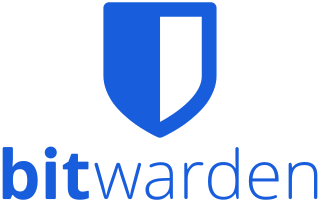
Electronic mail is a method of transmitting and receiving messages using electronic devices. It was conceived in the late–20th century as the digital version of, or counterpart to, mail. Email is a ubiquitous and very widely used communication medium; in current use, an email address is often treated as a basic and necessary part of many processes in business, commerce, government, education, entertainment, and other spheres of daily life in most countries.
In computing, the Internet Message Access Protocol (IMAP) is an Internet standard protocol used by email clients to retrieve email messages from a mail server over a TCP/IP connection. IMAP is defined by RFC 9051.
In computing, the Post Office Protocol (POP) is an application-layer Internet standard protocol used by e-mail clients to retrieve e-mail from a mail server. Today, POP version 3 (POP3) is the most commonly used version. Together with IMAP, it is one of the most common protocols for email retrieval.

An email client, email reader or, more formally, message user agent (MUA) or mail user agent is a computer program used to access and manage a user's email.

Webmail is an email service that can be accessed using a standard web browser. It contrasts with email service accessible through a specialised email client software. Additionally, many internet service providers (ISP) provide webmail as part of their internet service package. Similarly, some web hosting providers also provide webmail as a part of their hosting package.
The Cyrus IMAP server is electronic mail server software developed by Carnegie Mellon University. It differs from other Internet Message Access Protocol (IMAP) server implementations in that it is generally intended to be run on sealed servers, where normal users cannot log in.

AOL Mail is a free web-based email service provided by AOL, a division of Yahoo! Inc.

Roundcube is a web-based IMAP email client. Roundcube's most prominent feature is the pervasive use of Ajax technology. Roundcube is free and open-source software subject to the terms of the GNU General Public License (GPL-3.0-or-later), with exceptions for skins and plugins.
The following tables compare general and technical information for a number of notable webmail providers who offer a web interface in English.
My Opera was the virtual community for Opera web browser users. It belonged to Opera Software ASA. In addition to being a support site for the Opera browser, My Opera worked like a social networking site. It offered services such as blogs, photo albums, the free email service My Opera Mail and more. My Opera was closed down on March 3, 2014.

hMailServer was a free email server for Windows created by Martin Knafve. It ran as a Windows service and includes administration tools for management and backup. It had support for IMAP, POP3, and SMTP email protocols. It could use external database engines such as MySQL, MS SQL or PostgreSQL, or an internal MS SQL Compact Edition engine to store configuration and index data. The actual email messages were stored on disk in a raw MIME format. As of January 15th, 2022, active support and development were officially halted, although version 5.6 will continue to receive updates for critical bugs.

GMX Mail is a free advertising-supported email service provided by GMX. Users may access received GMX Mail via webmail, or using POP3 or IMAP4 protocols. Mail is sent using SMTP. Founded in 1997, GMX is a subsidiary of Ionos AG, a stock-listed company in Germany, and a sister company to Ionos and Fasthosts Internet. In addition to an email address, each GMX account includes a Mail Collector, Address Book, Organizer, and File Storage. Every user can register up to 10 individual GMX email addresses. Popup ads are displayed to all users, including premium, at GMX login; as of 2021 GMX was the only large email provider using popup ads.
EmailTray is a lightweight email client for the Microsoft Windows operating system. EmailTray was developed by Internet Promotion Agency S.A., a software development d.
A mailbox provider, mail service provider or, somewhat improperly, email service provider is a provider of email hosting. It implements email servers to send, receive, accept, and store email for other organizations or end users, on their behalf.

Kolab Now is a web-based email and groupware service, based completely on free and open-source software. It is owned and operated by Kolab Systems AG and was formerly known as MyKolab.

Proton Mail is a Swiss end-to-end encrypted email service founded in 2013 headquartered in Plan-les-Ouates, Switzerland. It uses client-side encryption to protect email content and user data before they are sent to Proton Mail servers, unlike other common email providers such as Gmail and Outlook.com. The service can be accessed through a webmail client, the Tor network, or dedicated iOS and Android apps.

Mailfence is a secure and encrypted email service that offers OpenPGP based end-to-end encryption and digital signatures. It was launched in November 2013 by ContactOffice Group, which has been operating an online collaboration suite for universities and other organizations since 1999.
MDaemon Email Server is an email server application with groupware functions for Microsoft Windows, first released by Alt-N Technologies in 1996.

Bitwarden is a freemium open-source password management service that stores sensitive information, such as website credentials, in an encrypted vault. The platform offers a variety of client applications, including a web interface, desktop applications, browser extensions, mobile apps, and a command-line interface. Bitwarden offers a free US or European cloud-hosted service as well as the ability to self-host.
The JSON Meta Application Protocol (JMAP) is a set of related open Internet Standard protocols for handling email. JMAP is implemented using JSON APIs over HTTP and has been developed as an alternative to IMAP/SMTP and proprietary email APIs such as Gmail and Outlook. Additional protocols and data models being built on top of the core of JMAP for handling contacts and calendar synchronization are meant to be potential replacements for CardDAV and CalDAV, and other support is currently in the works.












